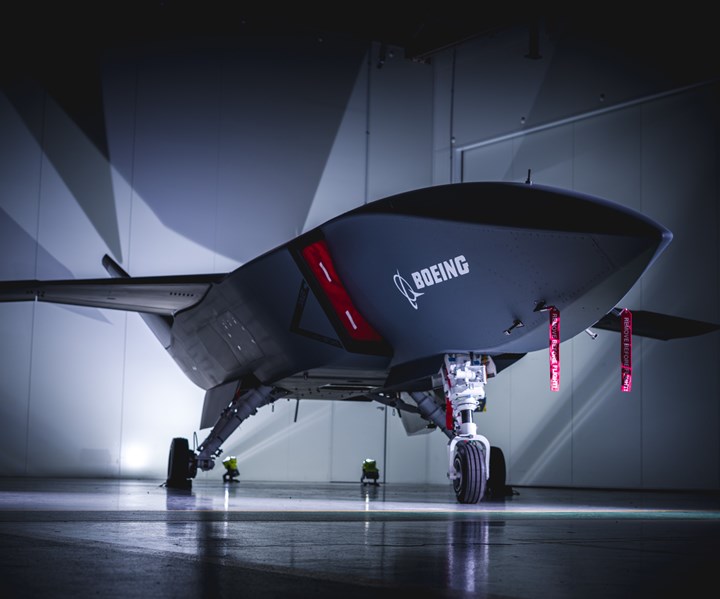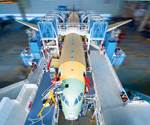Boeing announces first unmanned Loyal Wingman defense aircraft
The first of three prototypes, the Loyal Wingman’s artificial intelligence application and its use of composites soars above the milestone set for unmanned aircraft.

Source | Boeing
On May 5, a Boeing-led Australian industry team presented the first unmanned Loyal Wingman aircraft to the Royal Australian Air Force, a historic milestone for the company and the country. The aircraft, which uses artificial intelligence to extend the capabilities of manned and unmanned platforms, is the first to be designed, engineered and manufactured in Australia in more than 50 years. It is Boeing’s largest investment in an unmanned aircraft outside of the United States.
As the first of three prototypes for Australia’s Loyal Wingman Advanced Development Program, the aircraft also serves as the foundation for the Boeing Airpower Teaming System (ATS) being developed for the global defense market. With its ability to work and perform airborne missions alongside existing military aircraft, and use artificial intelligence to fly independently, the ATS — with a low-cost design — is designed to promote smarter teaming with existing aircraft.
More than 35 members of Australian industry are supporting prototype work across four Australian states. With a global market demand for highly capable but affordable unmanned aircraft, Boeing says it applied company-wide innovation to achieve those goals. The aircraft was engineered using a digital twin to model its structures, systems, capabilities and life-cycle requirements. It was also manufactured with Boeing’s largest ever resin-infused single composite structure, and assembled it using advanced manufacturing processes.
“This is a truly historic moment for our country and for Australian defense innovation,” says Scott Morrison, the Prime Minister of Australia. “The Loyal Wingman will be pivotal to exploring the critical capabilities our Air Force needs to protect our nation and its allies into the future.”
“We are proud to take this significant step forward with the Royal Australian Air Force and show the potential for smart unmanned teaming to serve as a force multiplier,” says Kristin Robertson, vice president and general manager of Autonomous Systems for Boeing Defense, Space & Security. “We look forward to getting the aircraft into flight testing and proving the unmanned teaming concept. We see global allies with those same mission needs, which is why this program is so important to advancing the development of the Boeing Airpower Teaming System.”
The Loyal Wingman prototype now moves into ground testing, followed by taxi and first flight later this year.
Related Content
-
Plant tour: Joby Aviation, Marina, Calif., U.S.
As the advanced air mobility market begins to take shape, market leader Joby Aviation works to industrialize composites manufacturing for its first-generation, composites-intensive, all-electric air taxi.
-
Materials & Processes: Fibers for composites
The structural properties of composite materials are derived primarily from the fiber reinforcement. Fiber types, their manufacture, their uses and the end-market applications in which they find most use are described.
-
Materials & Processes: Composites fibers and resins
Compared to legacy materials like steel, aluminum, iron and titanium, composites are still coming of age, and only just now are being better understood by design and manufacturing engineers. However, composites’ physical properties — combined with unbeatable light weight — make them undeniably attractive.















